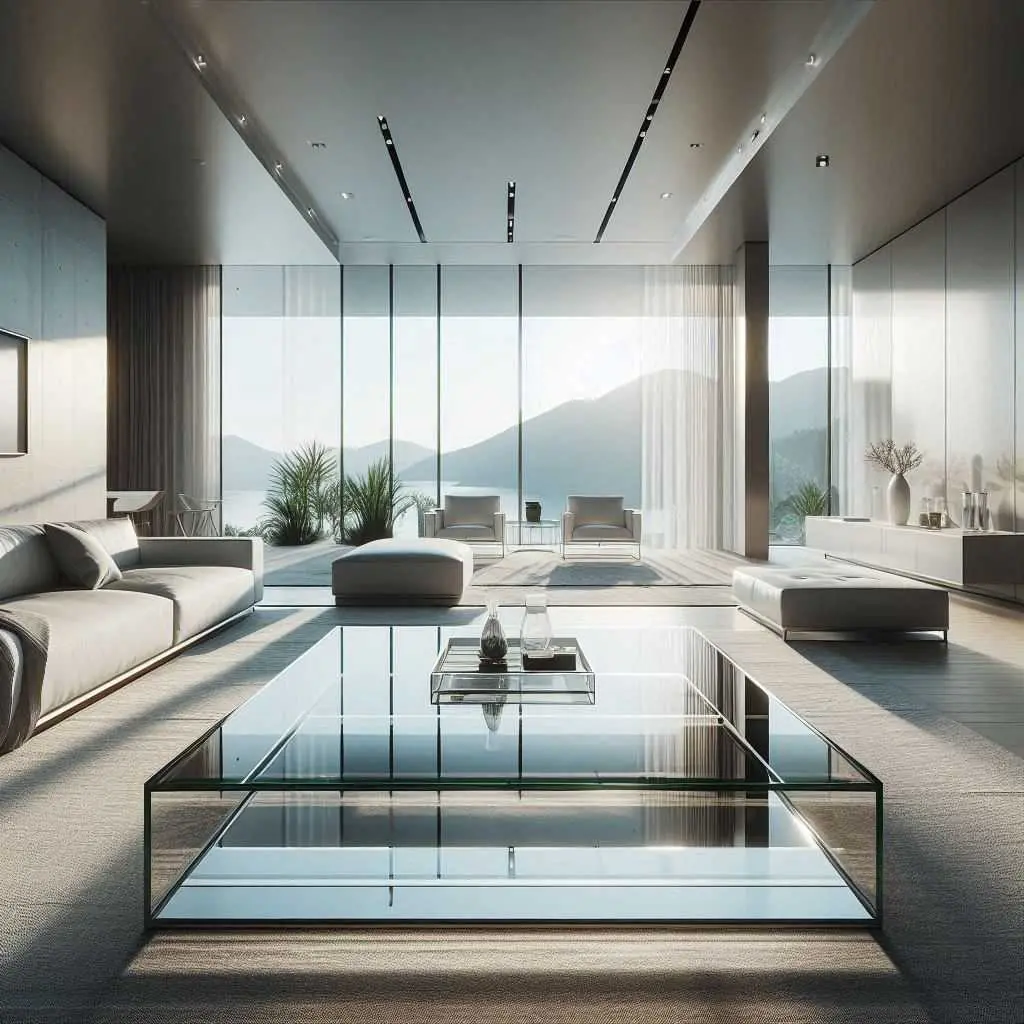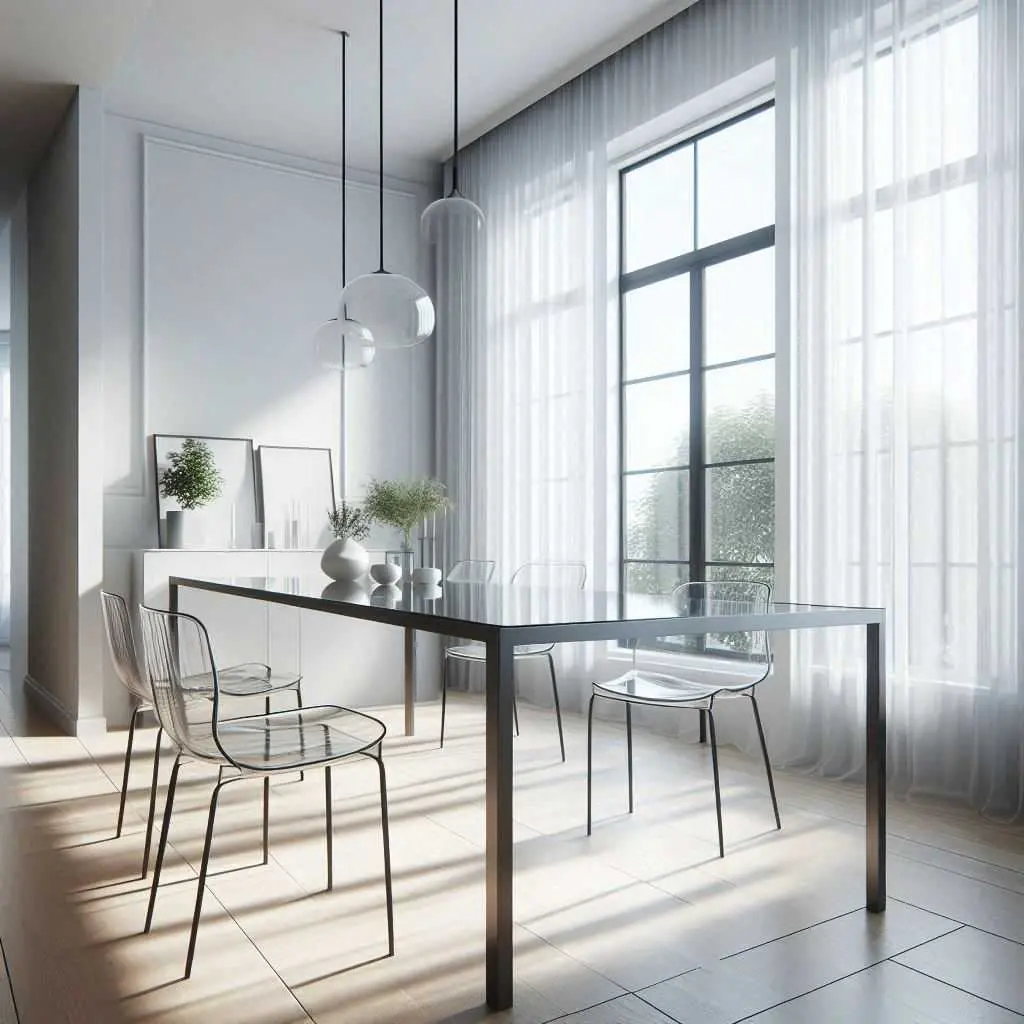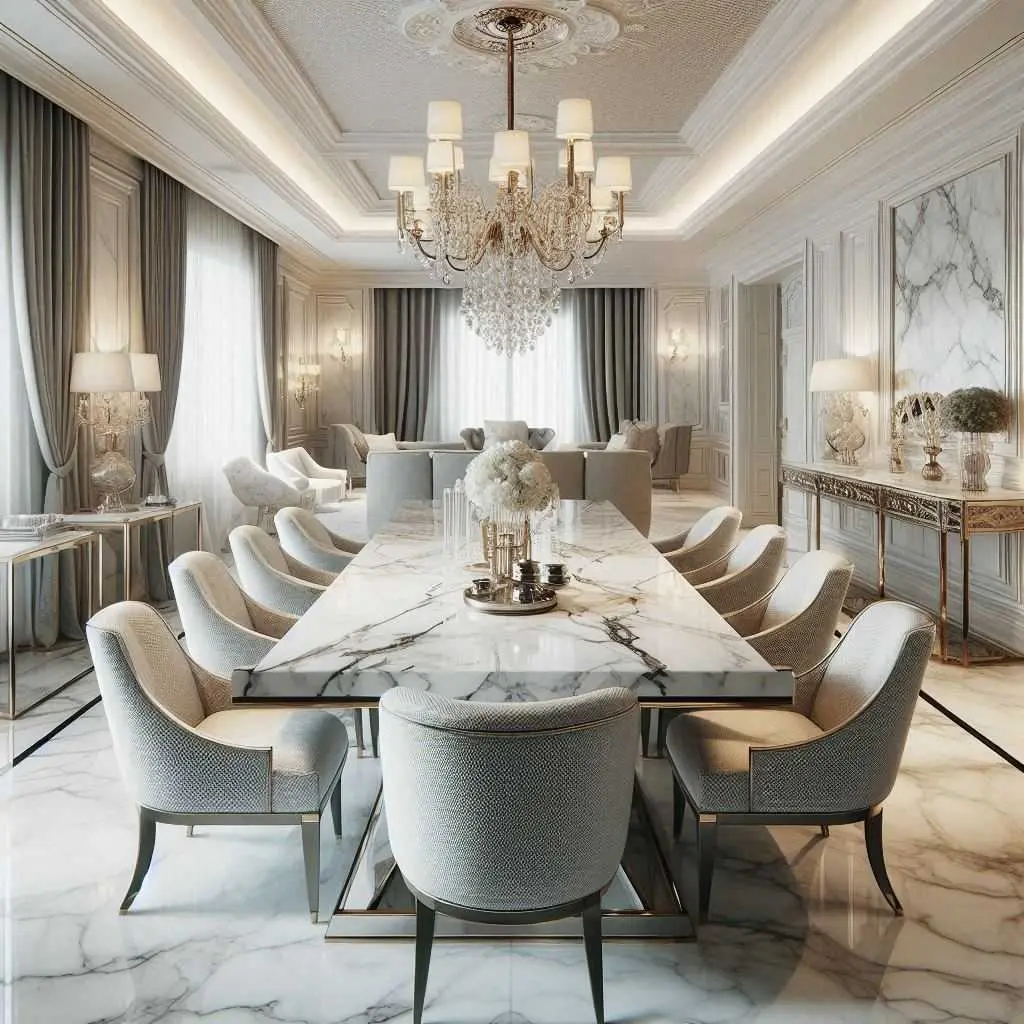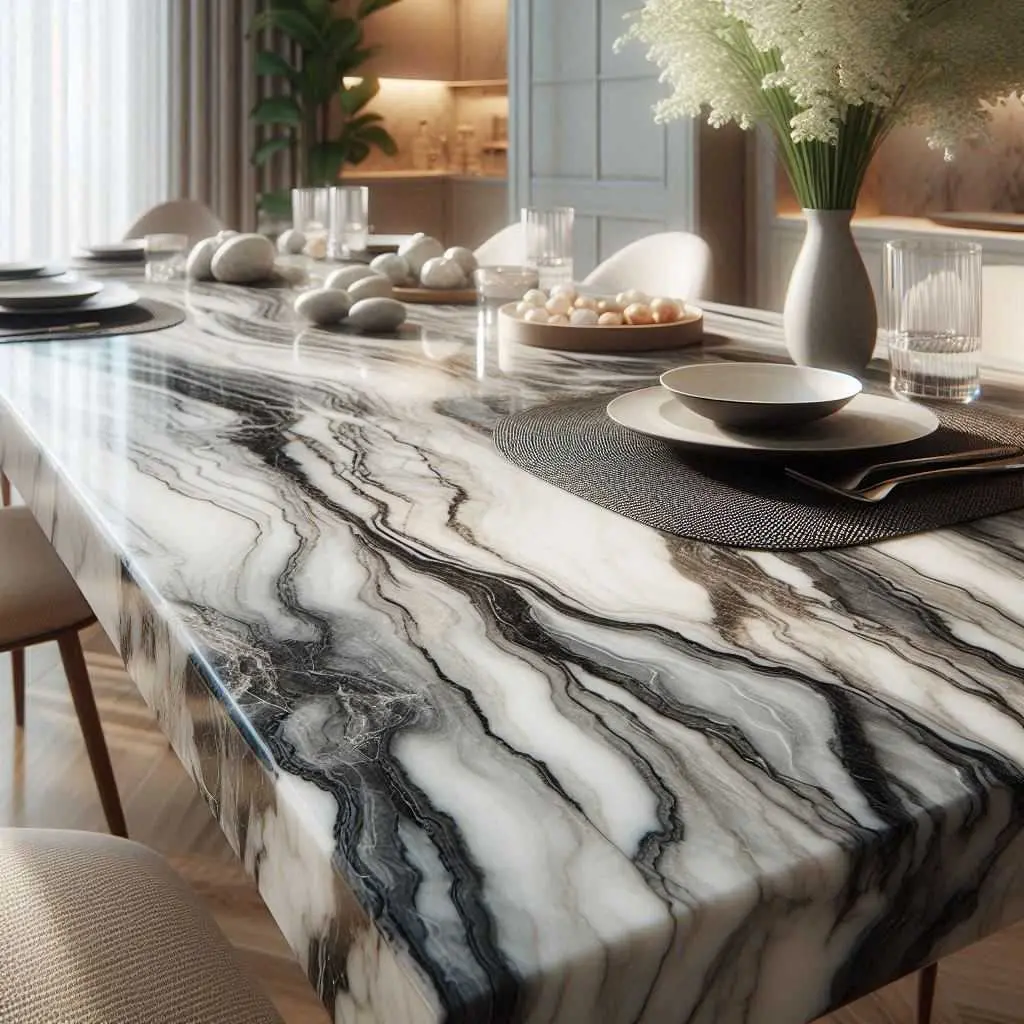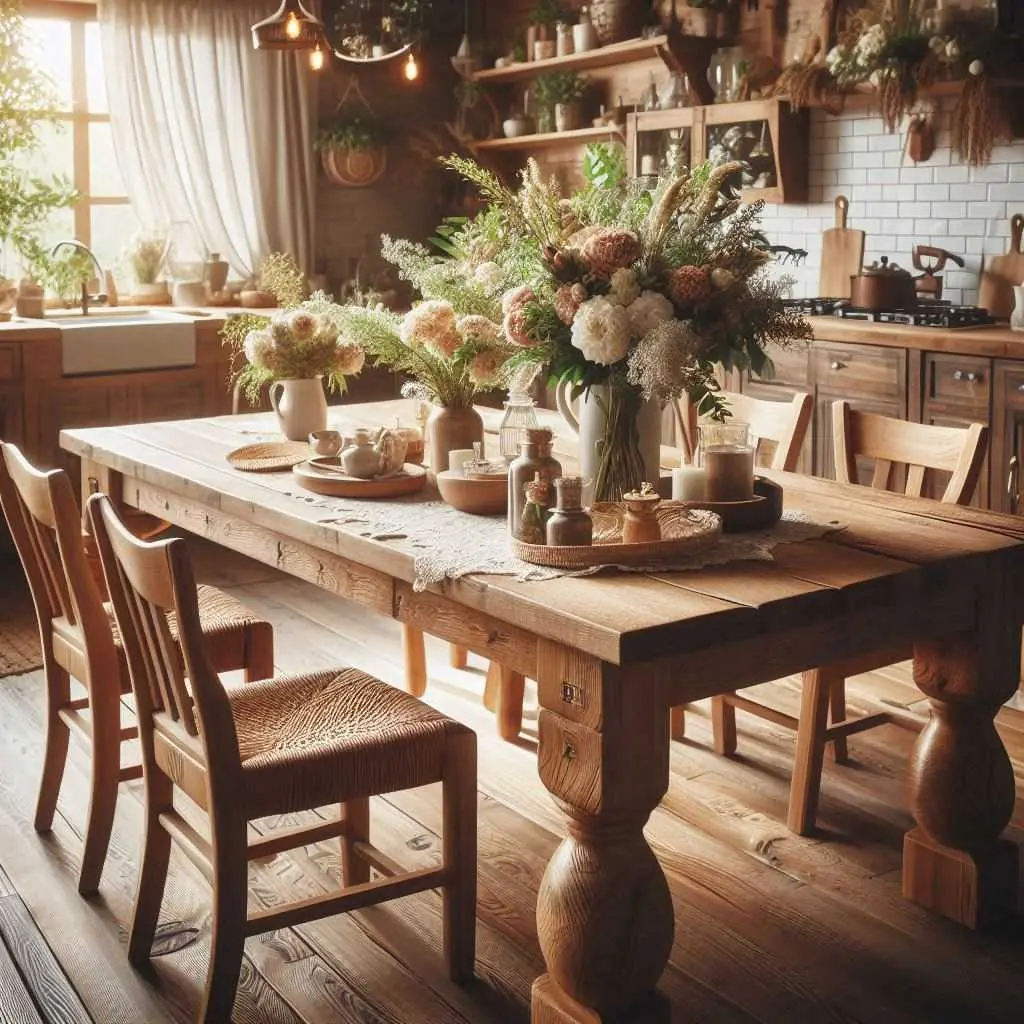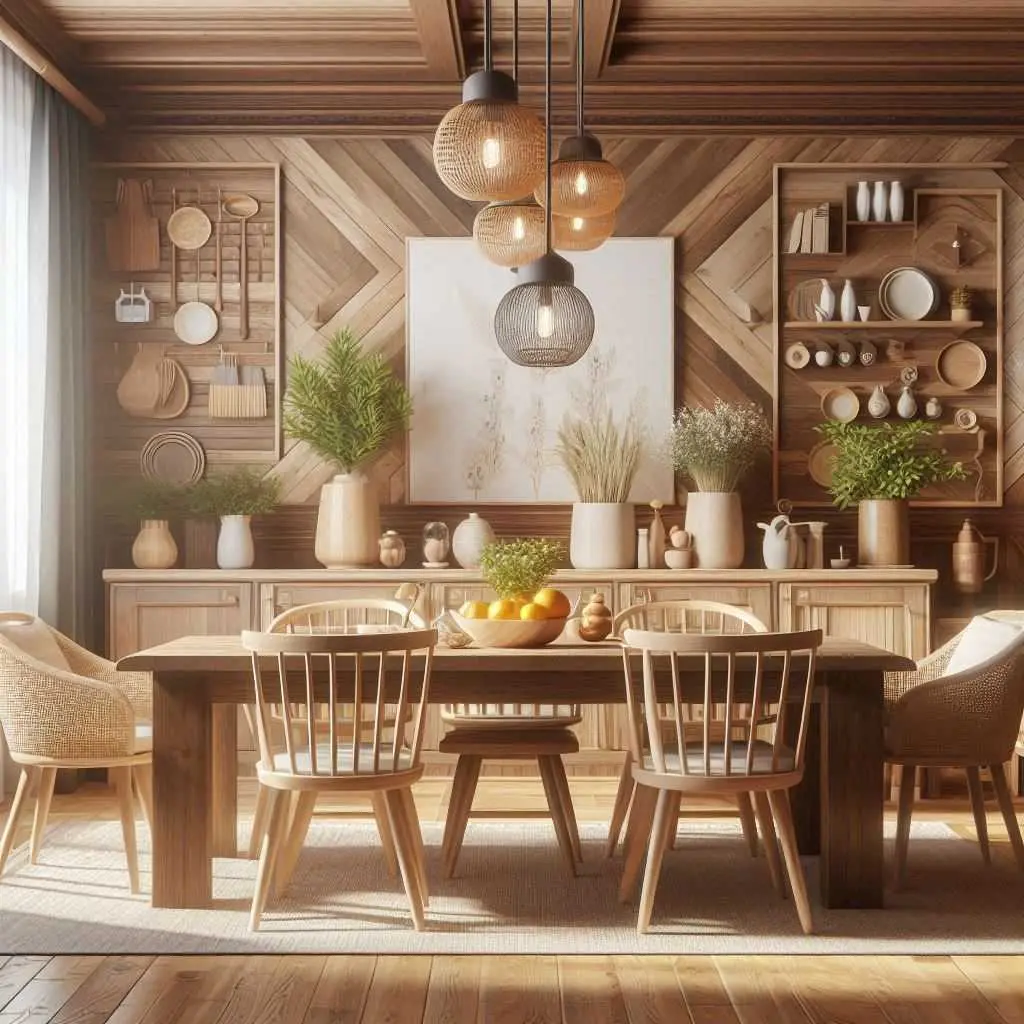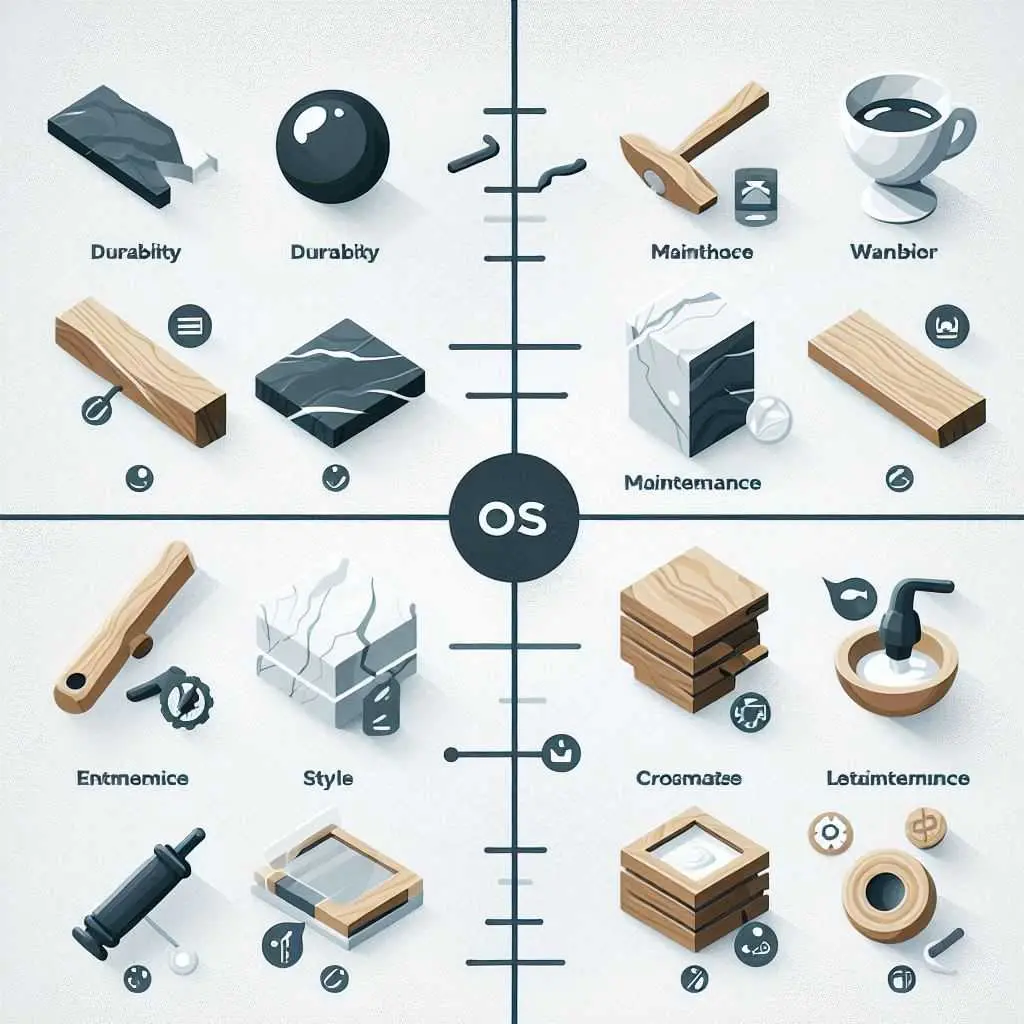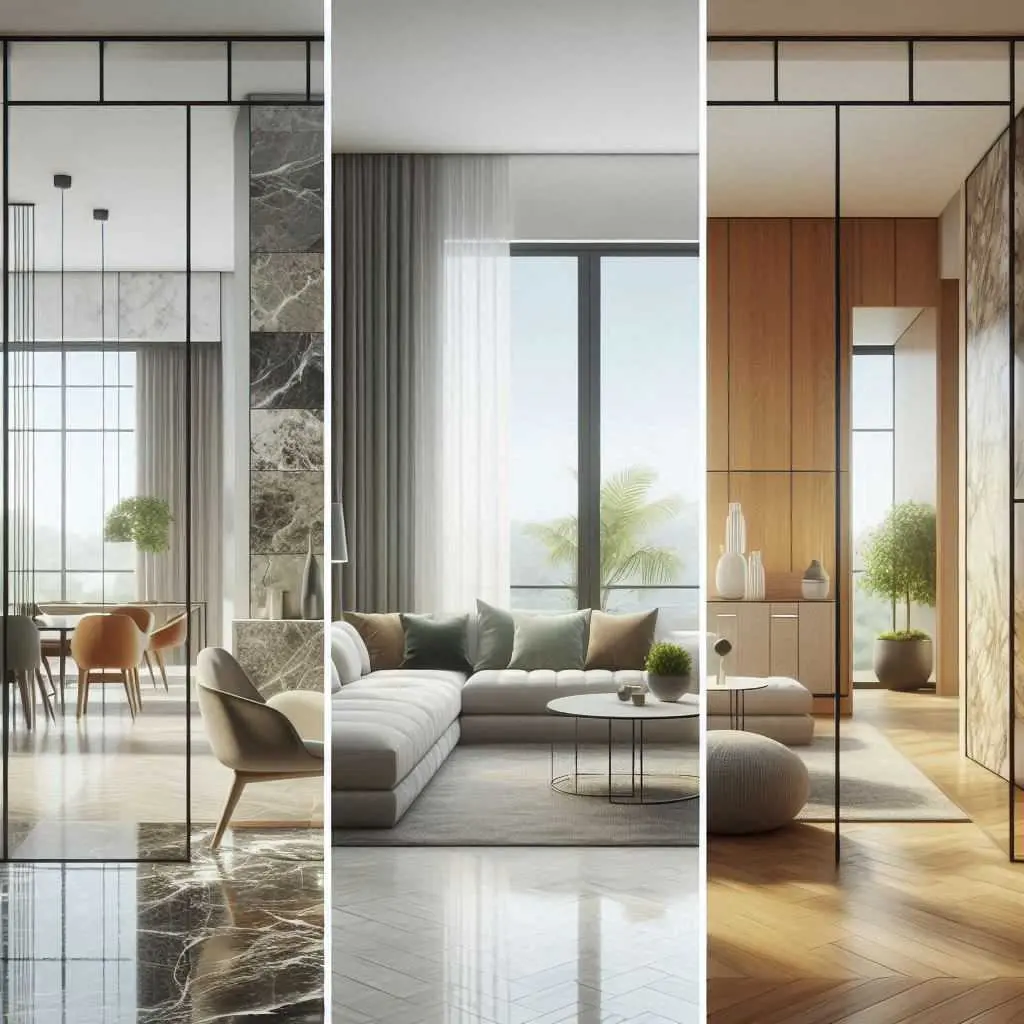Choosing the right tabletop material is more than just a practical decision; it plays a significant role in defining the aesthetic and ambiance of your space. Whether it’s your dining table, coffee table, or even an office desk, the material you choose will impact your table’s durability, maintenance requirements, and how it complements your lifestyle.
In this blog post, we will explore three popular tabletop materials—glass, marble, and wood—and help you determine which one fits your needs, budget, and personal style.
Contents
Glass Tabletops: Sleek, Modern, and Low Maintenance
Aesthetic Appeal
Glass tabletops are synonymous with modern, minimalist design. The reflective, transparent nature of glass can give a space a clean, airy, and open feel. Because glass is a neutral material, it can blend seamlessly into various interior styles, from contemporary homes to industrial spaces.
A glass tabletop, particularly one made from tempered glass, pairs beautifully with chrome, steel, and other metal accents, creating a light and sophisticated vibe. This makes it especially suitable for urban apartments, offices, or small spaces where maximizing visual space is essential.
Durability
While glass may seem fragile, modern tempered glass tabletops are designed to withstand everyday wear and tear. Tempered glass is resistant to heat, making it a good choice for dining tables or coffee tables where you might place hot beverages or dishes.
That said, glass can still chip, crack, or shatter under extreme pressure, and it’s prone to showing scratches over time. It’s also important to note that while glass is durable, it is unforgiving. Dropping heavy or sharp objects on it can lead to damage.
Maintenance
One of the main advantages of glass tabletops is how easy they are to clean. A simple glass cleaner or damp cloth will usually remove any fingerprints, smudges, or spills. However, these same fingerprints and smudges can be a nuisance for some, especially in high-traffic areas or if you have young children who like to touch everything.
For homes with pets, glass can also show paw prints, but overall, maintaining a glass surface is a quick task compared to wood or marble.
Best for:
- Small spaces, as the transparency of glass can make a room feel larger.
- Homes that lean toward modern, minimalist, or contemporary designs.
- People who prefer low-maintenance furniture but don’t mind occasional cleaning.
Marble Tabletops: Luxurious, Elegant, and Timeless
Aesthetic Appeal
Marble is often associated with luxury, elegance, and timeless beauty. Each slab of marble is unique, with natural veining and patterns that give it an unmatched aesthetic appeal. Marble tabletops, whether in white, black, or other colors, make a statement and immediately elevate the room’s look.
Marble is often used in traditional, classic, or even Mediterranean-style homes, but its versatility means it can also complement modern and minimalist interiors. The smooth, cool surface of marble adds a refined touch, making it a popular choice for high-end dining rooms, formal living spaces, or sophisticated offices.
Durability
While marble is a sturdy material, it is also porous and softer than other stone options like granite. This means that marble tabletops are susceptible to staining, etching, and scratching if not properly cared for. Spills from acidic substances, such as wine, citrus juices, or coffee, can damage the surface and leave permanent marks if not cleaned immediately.
It’s also important to note that marble can chip or crack if heavy objects fall on it. To protect your marble table, sealing it periodically is necessary, and coasters or placemats should always be used to prevent damage from liquids and heat.
Maintenance
Marble requires more maintenance than glass or wood. Because of its porous nature, it should be sealed regularly (at least once a year) to prevent stains and water damage. Cleaning should be done with a pH-neutral cleaner to avoid etching, and abrasive materials should never be used on marble.
While the maintenance of marble is more involved, many people find the beauty and elegance of the material worth the effort.
Best for:
- Homes with a luxurious, classic, or Mediterranean-inspired design.
- Formal dining rooms or spaces that don’t see heavy everyday use.
- Individuals who appreciate elegance and are willing to invest time and care into maintaining the material.
Wood Tabletops: Warm, Versatile, and Timeless
Aesthetic Appeal
Wood tabletops bring warmth and natural beauty to any space. Whether it’s a rustic farmhouse-style table or a sleek, polished wooden dining table, wood offers a wide variety of grains, colors, and finishes to suit different tastes. From oak and walnut to cherry and mahogany, each wood type has its own distinct character.
Wood’s versatility makes it suitable for almost any interior design style, from traditional to modern and everything in between. A wooden table instantly adds a sense of coziness and natural warmth, which is why it’s a popular choice for dining rooms and living rooms.
Durability
Wood is a durable material that can last for decades if properly maintained. However, it is susceptible to scratches, heat marks, and water damage. Using coasters, trivets, and placemats is essential to protect wood from spills and heat.
Unlike glass or marble, wood can develop a beautiful patina over time, which adds to its character. However, if you prefer your wood to look pristine, regular care and protection are necessary.
Maintenance
Wood requires more maintenance than glass but less than marble. Depending on the finish (lacquered, oiled, or varnished), wood tabletops may need regular polishing or oiling to keep them in good condition. It’s also important to clean spills immediately to prevent staining or water rings.
For scratches or minor damage, wood can often be sanded and refinished, making it a material that ages well if properly cared for.
Best for:
- Families and homes with children or frequent gatherings, as wood is forgiving of everyday wear and tear.
- Traditional, rustic, or eclectic interior styles where warmth and natural elements are desired.
- Individuals who appreciate the natural beauty of wood and are willing to invest in occasional upkeep.
Key Factors to Consider When Choosing a Tabletop Material
When deciding between glass, marble, or wood for your tabletop, there are several factors to consider:
1. Lifestyle
Think about how you plan to use your table. If it’s going to be the hub of family dinners, craft projects, or daily homework sessions, durability and ease of maintenance should be top priorities. If it’s more for decorative purposes or special occasions, you may prioritize aesthetic appeal over practicality.
2. Maintenance Requirements
Some materials require more care than others. Marble, for example, demands regular sealing and protection from spills, while glass is easy to clean but shows fingerprints easily. Wood strikes a balance, but still requires periodic upkeep to maintain its finish.
3. Budget
Your budget will likely play a major role in your decision. Glass and wood tables are generally more affordable than marble, especially if you opt for high-end marble. Be sure to weigh the long-term investment, including any maintenance costs, when making your decision.
4. Aesthetic Preferences
Each material has a distinct aesthetic, so consider the overall style of your home. Glass offers a modern, sleek look; marble brings luxury and elegance; while wood provides warmth and timeless beauty.
5. Space Considerations
Glass is a great option for small spaces, as its transparency makes rooms feel larger. Wood and marble, on the other hand, are ideal for larger spaces where their substantial presence can be fully appreciated.
Conclusion: Which Tabletop Material is Right for You?
Choosing the right tabletop material is a personal decision that depends on your lifestyle, budget, and design preferences.
- Glass is ideal for those who love sleek, modern designs and want something low-maintenance.
- Marble is perfect for anyone looking to add a touch of luxury and elegance to their home, but it does require more care and attention.
- Wood is versatile, warm, and suitable for almost any space, offering durability with proper maintenance.
In the end, your choice should reflect the balance between practicality, aesthetics, and how you use your table in daily life.


